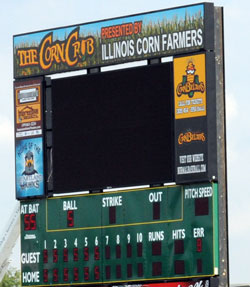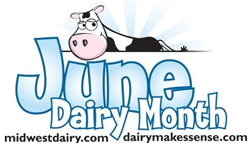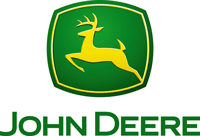 It’s opening night for the Normal CornBelters baseball team at the brand new Corn Crib stadium. The Corn Crib is presented by Illinois Corn Farmers and the AgWired team is set up in their suite getting ready for the first pitch.
It’s opening night for the Normal CornBelters baseball team at the brand new Corn Crib stadium. The Corn Crib is presented by Illinois Corn Farmers and the AgWired team is set up in their suite getting ready for the first pitch.
We’ll be here taking photos and getting some interviews throughout the evening. Of course we’ve already got a photo album started. You can find it here: Normal CornBelters Corn Crib Opener
We’ll be tweeting @AgriBlogger and @FarmPodcaster so you may want to keep an eye there for photos and other notes while we obtain more content to load here.
 To get things started Cindy interviewed Rod Weinzierl, Executive Director, Illinois Corn Growers and Illinois Corn Marketing Board. Rod says that the fans in the area selecting the team name and that caught the attention of the Association. They worked out an agreement to name the stadium the Corn Crib.
To get things started Cindy interviewed Rod Weinzierl, Executive Director, Illinois Corn Growers and Illinois Corn Marketing Board. Rod says that the fans in the area selecting the team name and that caught the attention of the Association. They worked out an agreement to name the stadium the Corn Crib.
You can listen to Cindy’s interview with Rod here.

 BASF announced today that it has made multi-lateral, worldwide regulatory submissions for new products — Xemium™ fungicide, and Initium™ fungicide. Both were filed with regulatory authorities in the United States, Canada, New Zealand and Australia. BASF also submitted Alpha-cypermethrin™ insecticide to the U.S. Environmental Protection Agency (EPA) for review.
BASF announced today that it has made multi-lateral, worldwide regulatory submissions for new products — Xemium™ fungicide, and Initium™ fungicide. Both were filed with regulatory authorities in the United States, Canada, New Zealand and Australia. BASF also submitted Alpha-cypermethrin™ insecticide to the U.S. Environmental Protection Agency (EPA) for review.
 Since it’s Dairy Month this week’s program is all about dairy with an interview I conducted bright and early this morning. I called up Matt Joyce,
Since it’s Dairy Month this week’s program is all about dairy with an interview I conducted bright and early this morning. I called up Matt Joyce, 





